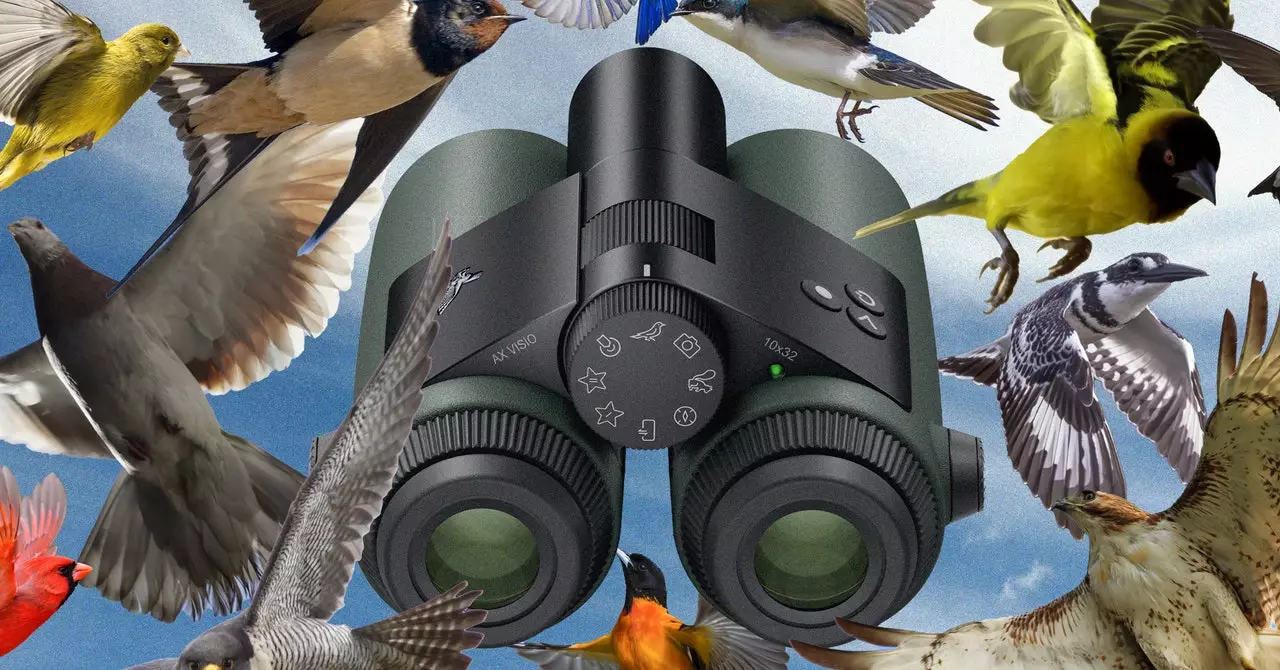Birdwatching has long captivated enthusiasts with its combination of patience, observation, and a unique connection to nature. However, in recent years, technological advancements have begun to redefine how this age-old pastime is practiced. The AX Visio binoculars, equipped with sophisticated identification capabilities powered by the Cornell Lab of Ornithology’s Merlin Bird ID database and the Sunbird database for other species, bring a modern twist to this traditional hobby.
The capability of the AX Visio binoculars to identify birds in virtually any location—including challenging environments like Antarctica—marks a significant advancement in wildlife observation tools. While the system utilizes the Sunbird database for identifying mammals, butterflies, and dragonflies, its robust bird identification feature sets it apart. The integration of image recognition technology, coupled with the binoculars’ GPS sensor, allows users to receive real-time feedback about their surroundings and the species they are observing. This all-encompassing approach alters the practice of birdwatching from a solely observational endeavor into an interactive learning experience.
I recently had the opportunity to experience the AX Visio firsthand in the picturesque setting of andBeyond Phinda Private Game Reserve in South Africa. Rental options at the reserve cost $40 per day, with all proceeds directed towards local conservation efforts—demonstrating a commendable commitment to preserving wildlife habitats while engaging visitors. Despite my penchant for birdwatching, I approached the use of such advanced technology with trepidation. Would the binoculars be overly complex? Would the integration of cameras and identification software overload the experience?
Fortunately, my concerns faded as I engaged with the device. The mode-selection wheel on the bridge of the binoculars allowed me to effortlessly navigate through various settings designed for bird, mammal, butterfly, and dragonfly identification, as well as a photography mode. This user-friendly design is particularly beneficial for novices who might otherwise shy away from using high-tech equipment. The ease of use is paramount; whose enjoyment hinges on the ability to quickly adjust settings without fumbling around in the field.
Successfully identifying wildlife is not merely about having the right tools but also about how effectively they can be utilized in real-world situations. When I focused on a bird, a helpful red circle appeared, signaling that the binoculars were in identification mode. For a species to be identified, it was essential for the creature to fill most of that circle while held steady, requiring a certain skill level from the operator.
During my adventure, I was particularly impressed with the binoculars’ accuracy. The AX Visio correctly identified a small malachite kingfisher, no larger than five inches, approximately 30 meters away. This highlighted both the capability of the technology and the potential for birdwatching experiences to become richer and more informative. However, not all encounters were as seamless as that one. Spotting a bee-eater camouflaged in the treetops, which was about 100 meters away, proved too much for the device as it failed to provide an identification due to distance constraints.
There were moments of frustration, too—a few instances where the binoculars failed to identify birds seemingly well within range, displaying error messages instead. This inconsistency underscored a reality of any technological advancement: limitations exist, and it’s vital for users to manage expectations.
The AX Visio binoculars signify a remarkable shift in the field of birdwatching. Their ability to combine advanced identification technology with a user-friendly interface offers both novice and seasoned birdwatchers new opportunities for understanding wildlife. While there are still challenges to refine, the overall experience can enhance appreciation for birdwatching while contributing to conservation efforts. As the technology progresses, it will be fascinating to see how it continues to shape our interactions with the natural world.


Leave a Reply